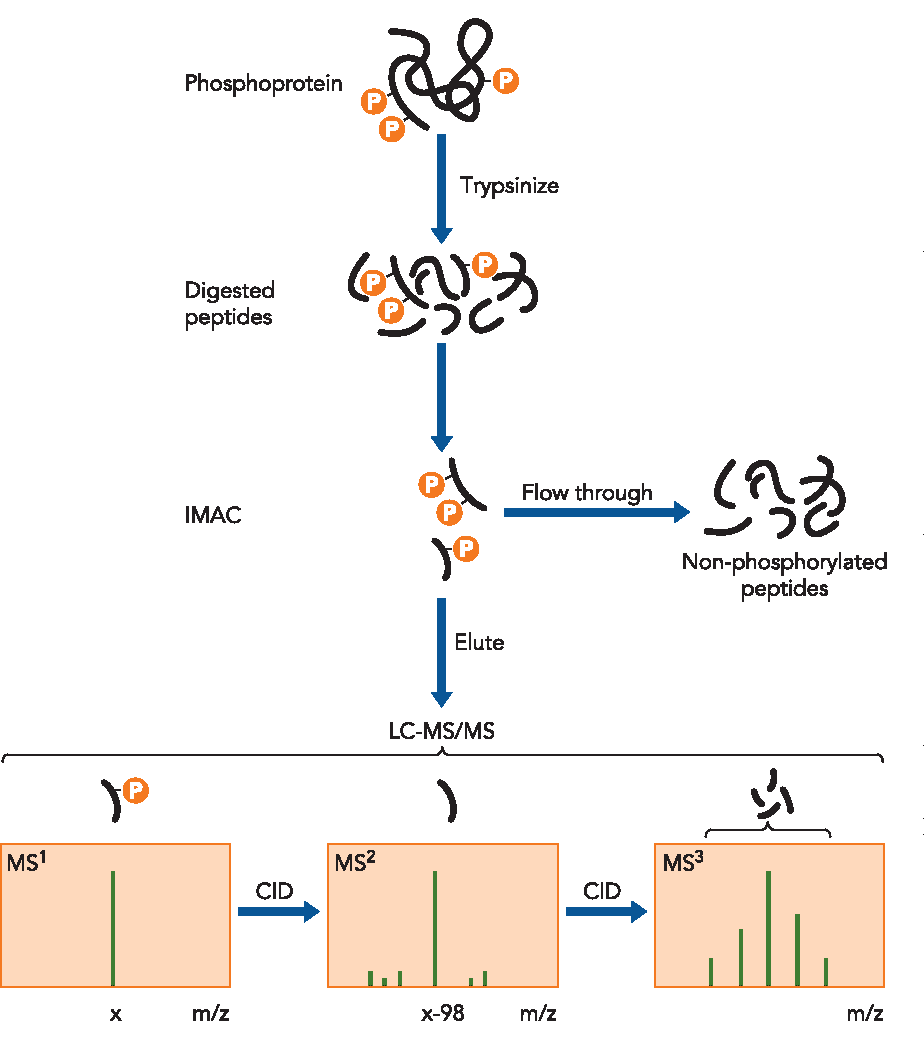Phosphorylated Protein Analysis Service
Protein phosphorylation, the most prevalent and extensively studied post-translational modification within organisms, involves the transfer of the gamma phosphate group from ATP or GTP to an amino acid residue on a target protein, catalyzed by protein kinases. This modification impacts the function of more than one-third of human cellular proteins. Phosphorylation and dephosphorylation, as reversible processes, regulate a broad spectrum of biological functions including cell growth, development, differentiation, signaling, apoptosis, neural activities, muscle contraction, and cancer progression. Accurate detection of these modifications is crucial, with mass spectrometry (MS) serving as a key tool due to its high sensitivity and precision.

Figure 1. Schematic Diagram of Protein Phosphorylation
At MtoZ Biolabs, we utilize Thermo Fisher's Orbitrap Fusion Lumos mass spectrometer combined with nano-liquid chromatography to offer integrated phosphorylation protein analysis services. Our offerings include:
Phosphorylation Analysis
Phosphopeptide Enrichment
Phosphorylation Site Identification
Quantitative Phosphoproteomics
Technical Principles
Phosphorylation involves the covalent attachment of a phosphate group to an amino acid, resulting in a molecular mass increase of 79.97 Da. Mass spectrometry can precisely detect this mass shift, thereby identifying phosphorylated peptides and their specific modification sites.
Analysis Workflow

Pisitkun, T. et al. J. Physiol. 2007.
Figure 2. Analysis Workflow of Phosphorylated Protein
Service Advantages
1. High Coverage: Ensured by multiple enzymatic digestions for complete sequence coverage.
2. High Precision and Sensitivity: Enhanced by labeling technologies like iTRAQ and TMT, which improve both the accuracy and consistency of our analyses.
3. Comprehensive Service: We provide thorough phosphorylation analysis, from phosphopeptide enrichment to site mapping.
4. Expert Team: Our experienced scientists deliver tailored analytical solutions and comprehensive reports.
Sample Submission Requirements

For more sample details, please consult our technical team.
Applications
1. Anticancer Drug Development
Investigate phosphorylation changes in cancer cells using mass spectrometry to elucidate the mechanisms of anticancer drugs and aid in optimizing drug design, including studies on tyrosine kinase inhibitors.
2. Neurodegenerative Disease Research
Identify and characterize aberrantly phosphorylated proteins and sites, such as tau protein, in conditions like Alzheimer's and Parkinson's diseases, aiding in understanding disease mechanisms and developing diagnostic and therapeutic strategies.
3. Immune Regulation Research
Examine phosphorylation dynamics in immune cells in response to various stimuli to study essential proteins in signaling pathways like those involving ZAP-70 and LAT, uncovering activation mechanisms and informing immunotherapy development.
4. Metabolic Regulation Research
Analyze phosphorylation patterns of key proteins in insulin signaling pathways, such as Akt and GSK-3β, to investigate insulin resistance mechanisms and drive the development of treatments for diabetes.
Deliverables
1. Experimental Procedures
2. Relevant Mass Spectrometry Parameters
3. Detailed Information on Phosphorylated Protein Analysis
4. Mass Spectrometry Images
5. Raw Data
MtoZ Biolabs, an integrated chromatography and mass spectrometry (MS) services provider.
Related Services
How to order?







